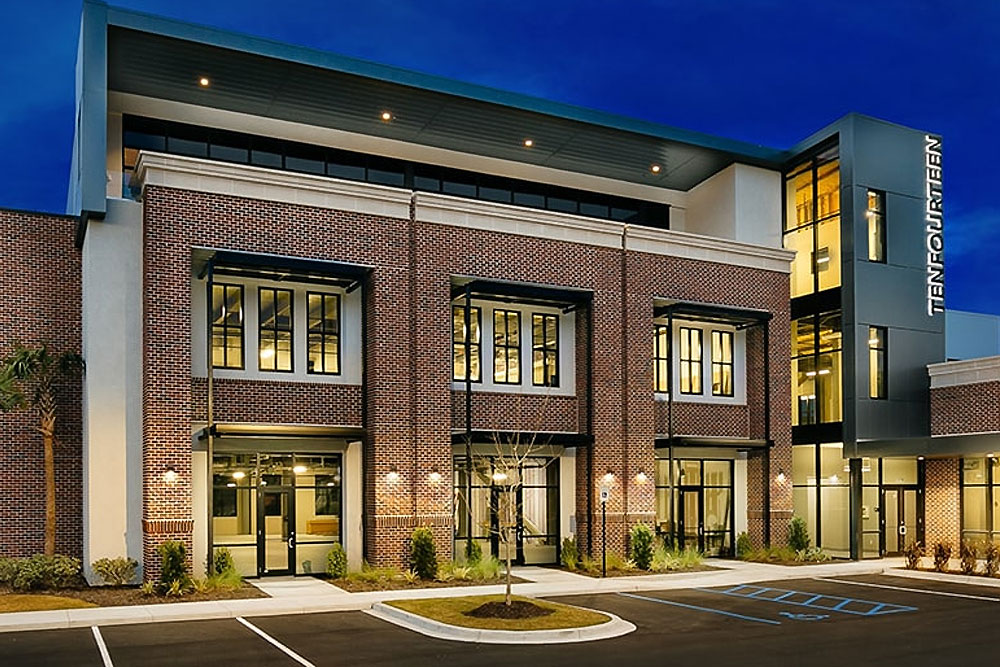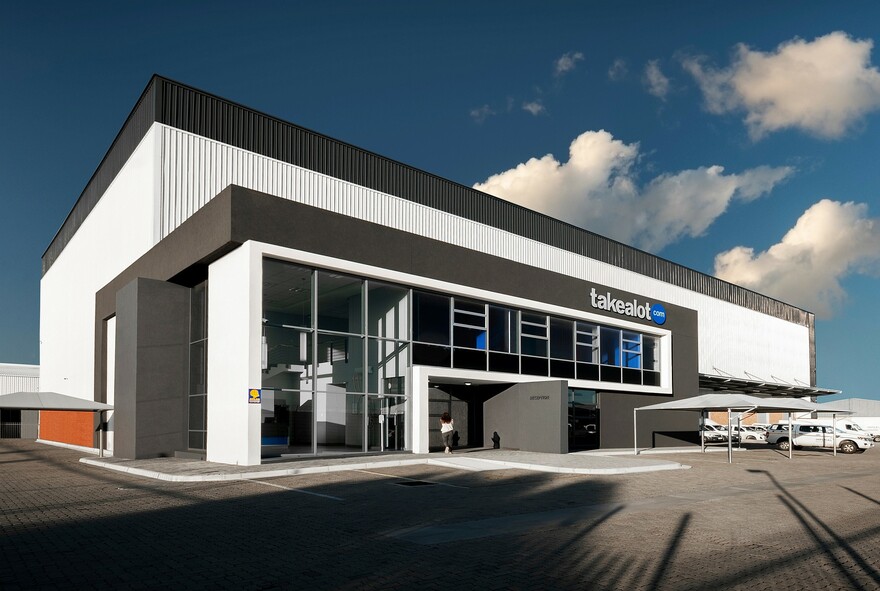Introducing the Comprehensive Providers Given by Commercial Architects for Modern Dope
Commercial Architects serve a critical function in modern development jobs. They blend layout aesthetic appeals with performance while sticking to regulative demands. Their know-how expands past plain building, incorporating lasting methods and ingenious innovations. As they navigate complex zoning regulations, Architects team up with various stakeholders to bring visions to life. This complex approach questions about the developing function of Architects fit modern-day areas and the impact of their job on future advancements.
Recognizing the Function of Commercial Architects in Modern Dope
In contemporary city landscapes, Commercial Architects play a crucial function fit useful and aesthetic areas that fulfill varied company demands. Their knowledge expands beyond plain style; they browse complex zoning legislations, constructing codes, and environmental guidelines. By teaming up with customers, they determine specific demands, ensuring that each job straightens with the client's vision while additionally taking into consideration functional aspects such as sustainability and cost-effectiveness. Commercial Architects are skilled at incorporating innovative modern technologies and materials into their designs, boosting both the functionality and energy effectiveness of buildings. They perform thorough site analyses to examine the possible challenges and chances offered by an area. Furthermore, efficient communication with specialists and various other stakeholders is vital, making certain that the task advances efficiently from perception to conclusion. Inevitably, Commercial Architects contribute in producing rooms that not only fulfill useful objectives but likewise add to the total personality and vibrancy of city settings.
Idea Style: Changing Ideas Into Fact
Principle layout works as a crucial stage in Commercial design, where innovative design remedies emerge from imaginative thinking. This procedure depends on collective ideation, bringing with each other varied viewpoints to refine and improve preliminary ideas. As concepts take shape, they transform from abstract ideas right into concrete architectural realities.
Cutting-edge Design Solutions
Transforming concepts right into truth is the characteristic of ingenious design remedies in Commercial design. These solutions blend imagination with functionality, resolving the distinct demands of modern-day advancements. By leveraging advanced innovations and sustainable techniques, Architects craft spaces that are not only visually attractive yet also effective and versatile. Emphasis on individual experience drives the design procedure, making certain that settings foster efficiency and collaboration. Each task gain from a tailored technique, where ideas are carefully developed to reflect the client's vision while taking into consideration future trends. Cutting-edge style remedies also prioritize adaptability, permitting adjustments gradually as business requirements evolve. Eventually, these techniques enhance the general worth of Commercial areas, making them crucial in today's competitive landscape.

Collaborative Ideation Refine
Cooperation works as the backbone of the ideation procedure in Commercial style, promoting creativity and technology amongst varied stakeholders. Architects, customers, designers, and area participants involve in dynamic conversations, making sure that all perspectives are thought about. This inclusive technique permits the exploration of numerous design ideas, motivating special options that line up with the task's vision. With workshops and conceptualizing sessions, ideas evolve and improve, transforming first concepts right into tangible styles. Modern technology likewise plays an essential role, with devices such as Building Information Modeling (BIM) helping with real-time partnership and changes. Eventually, this collaborative ideation process not only boosts the style outcome yet additionally cultivates a feeling of ownership and investment amongst all celebrations involved, causing successful Commercial advancements.
Zoning Evaluation: Navigating Rules and Compliance
As designers start on new tasks, comprehending zoning laws is vital to making certain conformity and avoiding expensive hold-ups. Zoning evaluation plays an important role in this process, as it involves examining regional zoning laws that determine land use, developing height, thickness, and obstacles. Commercial Architects possess the knowledge to browse these intricate laws, assisting clients determine acceptable uses and any kind of required differences.
Sustainable Layout Practices: Structure for the Future
Sustainable style techniques are significantly vital in the domain name of Commercial design, particularly as ecological concerns proceed to escalate. Architects prioritize green products, energy-efficient systems, and layout methods that minimize waste and environmental impact. Incorporating renewable resource sources, such as solar panels and wind generators, permits structures to create their own power and minimize dependence on fossil fuels.Furthermore, lasting layout emphasizes the relevance of interior ecological high quality. This includes utilizing natural light, boosting air flow, and selecting non-toxic materials to enhance occupant health and efficiency. Eco-friendly roofs and living wall surfaces are additionally prominent functions that add to biodiversity and city cooling.Additionally, Commercial Architects typically incorporate water conservation methods, like rain harvesting and drought-resistant landscape design. Via these cutting-edge techniques, they produce areas that not only meet modern requirements but likewise promote a sustainable future, attending to the expanding demand for accountable growth in the contemporary world.
Project Management: Ensuring Timely and Efficient Execution
Reliable task management is crucial for making certain that Commercial style tasks are completed promptly and within budget plan. This role incorporates a series of duties, including the control of different stakeholders, timelines, and sources. Commercial Architects take advantage of their knowledge to develop comprehensive project strategies that detail critical turning points and deliverables, enabling systematic progression tracking.Regular communication amongst group members and clients is crucial, promoting openness and facilitating timely decision-making. Threat monitoring methods are likewise employed to determine prospective challenges early, allowing proactive solutions to be established. By using innovative job administration devices, Architects can monitor task performance in real-time, making changes as essential to preserve effectiveness.
Inside Layout: Producing Practical and Aesthetic Spaces
Interior decoration plays an important duty in enhancing both capability and appearance within Commercial spaces. Effective area planning can enhance process and enhance user experience, while visual style principles contribute to a visually appealing atmosphere - commercial architects. Together, these components develop rooms that are not just sensible yet additionally motivating
Area Preparation Performance
While optimizing the utility of readily available room, Commercial Architects focus on space planning effectiveness to produce both functional and aesthetically pleasing environments. This approach includes cautious analysis of the spatial layout to guarantee optimal usage of every square foot. Architects consider elements such as workflow, accessibility, and natural light to improve usability. By purposefully positioning furnishings, tools, and workstations, they facilitate motion and communication amongst users, advertising efficiency. Furthermore, zoning different locations for details functions helps in managing go to this website sound and personal privacy, producing a harmonious environment. With reliable room preparation, Commercial Architects can transform restrictions into opportunities, making sure that each room fulfills the diverse requirements of its occupants while sticking to regulative requirements and sector requirements.
Aesthetic Design Concepts
Aesthetic style concepts play a crucial function fit environments that are not just functional however additionally visually enticing. These principles guide Commercial Architects in developing spaces that resonate with users while boosting brand identity. Trick components include balance, percentage, and harmony, which collaborate to create a natural appearance. Color pattern and products are thoroughly selected to stimulate desired feelings and support the total style. In addition, lights plays an essential function, affecting mood and visibility while highlighting building features. By integrating these principles, Architects guarantee that areas are not only practical but also inviting and inspiring. Eventually, efficient visual layout promotes a positive individual experience, urging interaction and satisfaction in Commercial settings.
Partnership With Stakeholders: Cultivating Successful Partnerships
Effective collaborations in Commercial style hinge on effective cooperation with stakeholders, making certain that every voice is listened to and valued. This joint technique includes appealing numerous parties, consisting of customers, specialists, and neighborhood participants, throughout the style and development procedure. By cultivating open interaction, Commercial Architects can deal with problems, collect understandings, and line up the task's vision with stakeholder expectations.The go right here assimilation of diverse point of views improves creativity and development, resulting in even more functional and aesthetically pleasing layouts. Routine conferences, responses sessions, and workshops facilitate this discussion, allowing Architects to adapt their plans in reaction to stakeholder input. Furthermore, developing depend on through openness and liability strengthens these partnerships, causing a smoother job execution.Ultimately, the success of modern-day growths depends on the Architects' capacity to browse and harmonize varying interests, creating a collective atmosphere that promotes shared objectives and common success.
Often Asked Questions
Just How Do Commercial Architects Manage Budget Constraints During a Task?

What Types of Software Application Do Commercial Architects Typically Use?
Commercial Architects typically utilize software program such as AutoCAD for composing, Revit for Building Info Modeling, SketchUp for 3D modeling, and task management devices like Microsoft Task to boost partnership and streamline workflows throughout the style process.
Can Commercial Architects Assist With Acquiring Funding for Projects?
Commercial Architects can aid in getting financing for projects by preparing detailed proposals, assisting to articulate layout visions, and supplying economic estimates that can enhance the likelihood of protecting needed funding from financiers or economic organizations.
Exactly How Do Architects Guarantee Safety And Security During the Building Refine?
Architects assure security throughout building by carrying out extensive style requirements, collaborating with engineers, conducting regular site evaluations, sticking to find out local guidelines, and promoting interaction amongst all stakeholders to mitigate threats and promote a safe functioning environment.
What Ongoing Support Do Architects Give After Project Conclusion?
After project conclusion, Architects supply ongoing assistance via upkeep appointments, performance analyses, and layout alterations. They ensure structures fulfill progressing needs, address prospective concerns, and keep compliance with guidelines, fostering a long-lasting partnership with customers.